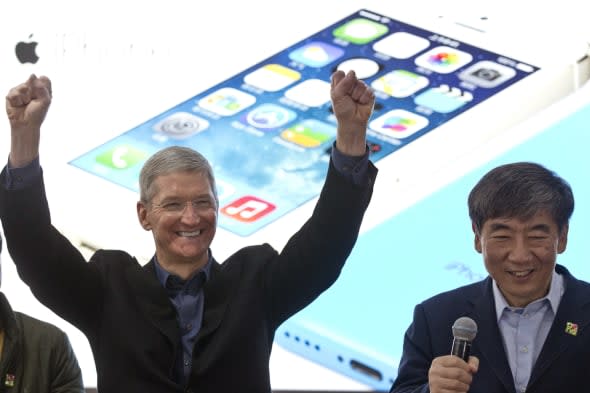New York Times downplays iPhone launch on China Mobile less than 12 hours after device goes on sale

Without even waiting long enough to let Tim Cook's signature dry, the New York Times this past Friday was quick to publish an article detailing the hurdles that remain for Apple in China while painting a gloomy picture for Apple's future prospects in the country.
The Times report drew specific attention to the "muted" lines that accompanied the long-awaited release of the iPhone on China Mobile.
Apple is counting on a long-awaited agreement with China Mobile, the world's largest cellular operator, to reverse its fortunes in China. But the initial reception was muted on Friday, when customers were finally able to buy iPhones from China Mobile.
Instead of the round-the-block lines that have greeted Apple product introductions in China and other countries in the past, only about a dozen customers showed up to buy iPhones at the opening of a store in Beijing – despite the presence of a special guest, the Apple chief executive, Timothy D. Cook.
The report also added that iPhone market share in the country has fallen into the single digits in recent time.
So is there cause for concern? Has this China Mobile experiment been all for naught? Can we just call it a night and call the iPhone on China Mobile a bust?
Not even close.
The New York Times has perfected the art of publishing slanted Apple stories to the point where they've lost their ability to provide proper context to their reporting. This typically results in misleading headlines and articles that, unfortunately, often amount to a collection of half-truths.
First off, let's tackle Apple's single-digit market share. Blindly focusing on this metric doesn't really paint a full or accurate picture. After all, if iPhone sales doubled while Samsung smartphone sales tripled, Apple's market share would go down even though they'd be doing quite well.
Second, Apple's share of the smartphone market has risen rather steadily in recent months. Counterpoint Research last month reported that Apple's share of the smartphone market in China more than doubled from 6 percent to 12 percent in October on account of a strong iPhone 5s/5c launch. Of course, Canalys research reported last month that Apple's share of the smartphone market was at 6 percent.
The takeaway? You guessed it -- many of these market share reports are complete baloney.

What we should focus on is that Cook said this past week that iPhone sales in China last quarter set a brand-new record.
What we should also focus on is that China Mobile processed 1.2 million iPhone pre-orders. The Times article, in this regard, quotes a research analyst who said that "online registrations" may only result in actual sales in "about a third of the cases." All the more reason to wait a bit, relax and see how sales actually pan out.
Nonetheless, the Times was all too quick to predict trouble ahead on account of "muted" lines.
To this end, Philip Elmer-DeWitt of Fortune provides some much-needed context regarding the China Mobile launch.
With more than 760 million subscribers (one-tenth of the world's population), extrapolating preliminary iPhone sales data from the lines around one store when there are 3,000 outlets is a bit elementary at best, and purposefully misleading at worst.
Indeed, Cook himself explained that the China Mobile deal is so promising precisely because it extends the iPhone's reach into areas that were previously devoid of any Apple presence.
In short, do we know how the iPhone will sell on China Mobile?
No.
In fact, it's so early in the game that it boggles my mind that a publication as reputable as the Times would laser focus in on a small line at one store, leave out important details, and ultimately deduce that Apple faces hurdles ahead.
That's not to say that it's clear sailing ahead for Apple, but painting a pessimistic outlook without providing important contextual details is sloppy journalism.

